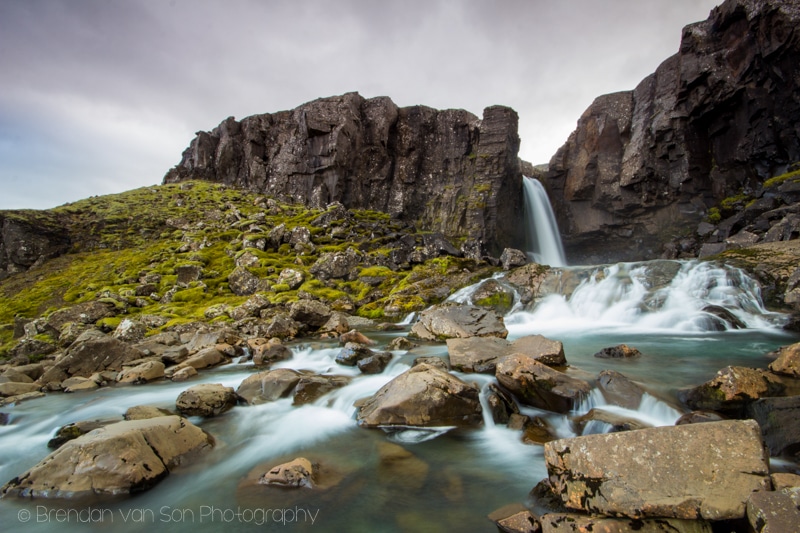Iceland is one of those places that’s just magic for photography. It seems like everywhere you look the light is amazing and there’s something totally photo-worthy. But the real beauty of photography in Iceland is that the weather and light changes so dramatically and quickly, that everyone experiences places completely differently. Of course, that’s also the struggle. It’s hard to properly prepare for Iceland as a photographer when the conditions are constantly switching up. Thus, this is a bit of a guide to photography for Iceland.

The Time of Year
Iceland really is special anytime of year. You can go in the summer for the long days, or the winter for the short days and those beautiful northern lights. Really, it definitely depends on you. Personally, I think June is the best month of the year to visit Iceland. June is the month where the weather cooperates the most. Also, towards the end of the month you have those incredibly long days where the beautiful sunsets just seem to last forever. If you want a bit more of an depth look at the best time of year to visit, check out this more general Iceland travel guide.
The Gear
Gear is always such a challenge, and choosing what equipment to take to Iceland is incredibly tricky. That said, I think the general rule is to pack more than you think you’d need. The other rule is to be prepared for weather. Packing things like rain covers, lens wipes, and even silica packs to keep your gear dry is really important. Other non-electronic gear you’ll want to bring are rain slicks, and if you’re hoping to get into some of the streams and waterfalls, you’ll want to bring hip-waiters.
As for camera gear itself, I think you really want to be shooting two bodies in Iceland. The reason is this: the weather is so nasty that you don’t want to be switching lenses out in the wild conditions. I’d recommended a lens like a 16-35mm, and a long lens like a 70-200mm. I really think that with just those two lenses you could probably shoot all of Iceland. The last time I photographed the country I used these two exclusively and I never felt like I was missing something.
Also, don’t forget the importance of a good tripod. The winds in Iceland can be completely unforgiving. If you don’t have a sturdy tripod, your camera could definitely take a tumble and get damaged. I’ve heard from a number of people who have broken gear in Iceland due to the high winds. Don’t cheap out on your tripod. Try something that’s heavy-duty but also versatile like the 3 Legged Thing Albert.
The Locations
There are so many locations in Iceland worth photographing. In fact, even in all my time there, there are so many places that I’ve yet to shoot.
Most first time visitors to Iceland head straight to the southern part of the island. And, for good reason. It’s down here where you’ll find some of the most impressive features in the country all within a fairly short distance from one another. Likely the most popular of the waterfalls down in the south is Skogafoss, which is very photogenic. However, photographers are also very keen on Seljalandsfoss which is particularly great at sunset.
I’m quite partial, however, to the north of Iceland. Not only do you get fewer tourists up this way, but the scenery is incredible. If you’re waterfall chasing, Kirkjufellsfoss is likely the most impressive waterfall photo location in the country. It’s a beauty. Also in that area you’ll find some really incredible geological features like geysers and hot springs. You also have some beautifully rugged coasts.
If you’re into animals, you’ll certainly also find that. The Icelandic horses are basically everywhere on the island, and you’re basically welcome to walk up to them for photographs. If you’re looking for Puffins, be sure they are there when you plan to visit as they don’t stick around all year. There are a number of places on the island where you can find them when they are nesting in Iceland.
On of the biggest tips I can give you for photo locations in Iceland is to plan less, and wander more. I think a lot of photographers really get stuck on the classic locations in the country. However, there are heaps of beautiful places to make images in the country. If you stick to the classic spots, you’ll end up with the same imagery as everyone else. Find new and unique photo locations by exploring. Trust me, you don’t have to get far off the beaten path to find some incredible spots.
What to Expect
The thing to expect in Iceland is for conditions to never stay the same. The weather is wild and can change on the drop of a dime. There are times where it will be blue sky, then you’ll turn a corner to find a storm. So, you have to be prepared. You’ll spend a lot of time soaked wet in Iceland if you’re not prepared for the weather. Be sure your gear is also prepared for potential rains and winds.
The other thing to expect is to be blown away. No matter how amazing the images you’ll see on Instagram from Iceland are, it’s more beautiful in real life.



